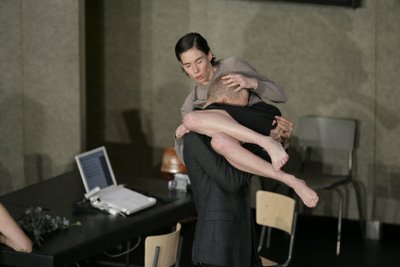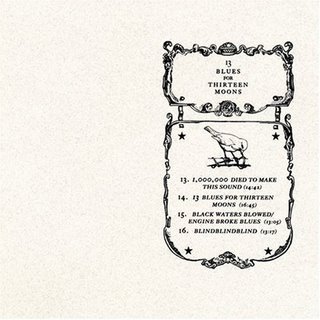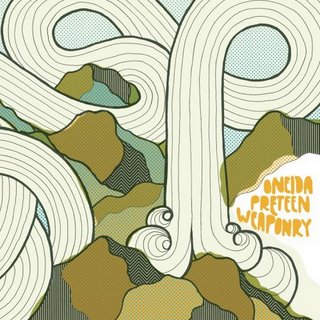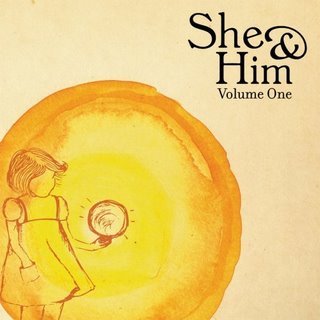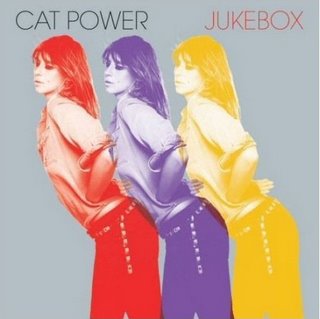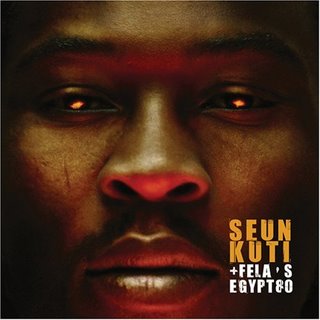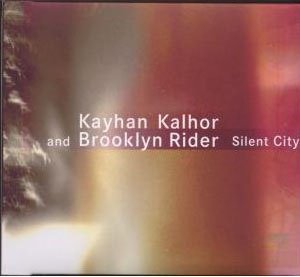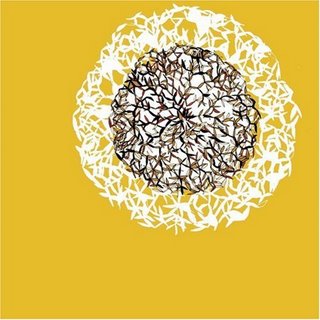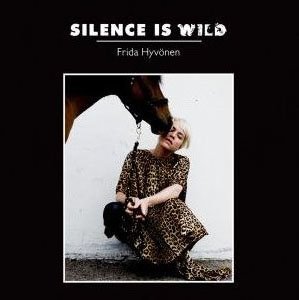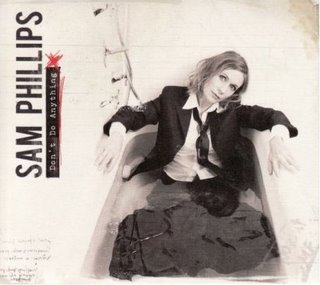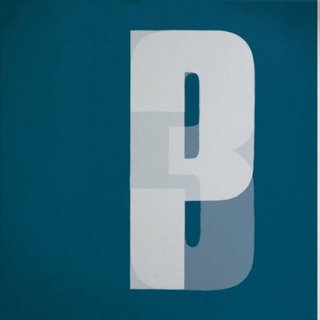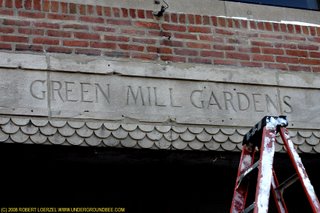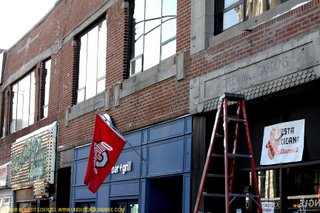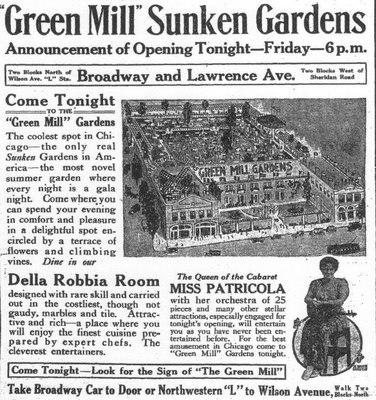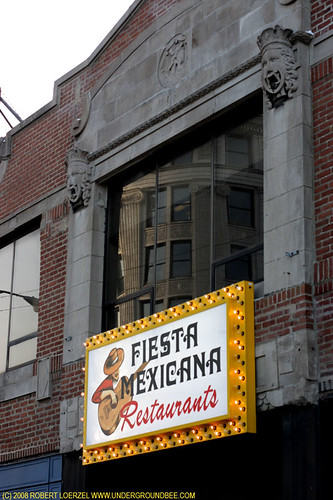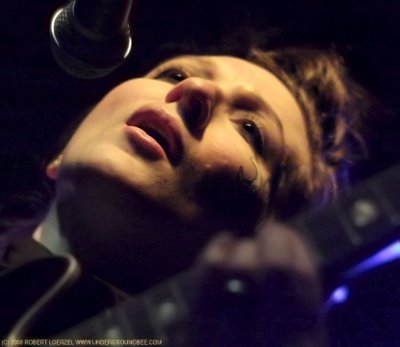 Twitter, 12:05 p.m.: Edie Sedgwick, mustachioed guy in a dress at sxsw: “Could I get more scrambled eggs in the monitor?”
Twitter, 12:05 p.m.: Edie Sedgwick, mustachioed guy in a dress at sxsw: “Could I get more scrambled eggs in the monitor?”
Edie Sedgwick, a transvestite singer who has adopted the stage name of an actress who was in Andy Warhol films, was on my list of acts to see at SXSW. Sedgwick (a.k.a. Justin Moyer of Washington, D.C., a founding member of Dischord bands El Guapo and Antelope), has a really cool track called “Edie Sedgwick II” — carrying on that odd tradition of bands with song titles similar to the band name.
The sxsw Web site has an interesting story about how Moyer developed his latest musical persona after suffering from epileptic seizures. He played a short set around noon at the Radio Room, with some hilarious stage banter (see my tweet above), playing up the incongruities of being a man with a mustache in a blond wig and slinky dress. He grabbed an audience member’s cell phone or camera, lifted up his dress and … well, it looked like he was going to stick the cell phone into the top of his nylon stockings, but I’m not sure if he actually went that far. The music was pretty good, but alas, he did not play that song I was waiting to hear.
 I also caught a song by Head of Skulls, which was playing a set out on the Radio Room patio, overlapping with the show by Edie Sedgwick. I didn’t even realize this was a Chicago band until I recognized the bassist as Allison, a bartender at the Empty Bottle. (She’s identified on the Head of Skulls myspace page simply as “The Witch.”) The music was hard rock of the pulverizing punk/metal variety.
I also caught a song by Head of Skulls, which was playing a set out on the Radio Room patio, overlapping with the show by Edie Sedgwick. I didn’t even realize this was a Chicago band until I recognized the bassist as Allison, a bartender at the Empty Bottle. (She’s identified on the Head of Skulls myspace page simply as “The Witch.”) The music was hard rock of the pulverizing punk/metal variety.
 12:16 p.m.: I came to the Seattle sxsw [party] for the free food & discovered a cool band, Hey Marseilles. Sounds like Decemberists.
12:16 p.m.: I came to the Seattle sxsw [party] for the free food & discovered a cool band, Hey Marseilles. Sounds like Decemberists.
Another group I hadn’t heard of. They weren’t even an official SXSW band this year. But Hey Marseilles made a big impression on me, with some tuneful songs featuring the full complement of assorted instruments that are becoming typical these days in large indie-rock ensembles: tuba, accordion, horns, extra bass drums. They reminded me a lot of the Decemberists, although Hey Marseilles’ singer, Matt Bishop, is lot less mannered in his vocal style than Colin Meloy.
12:48 p.m.: Heavenly States are rocking the convention center cafe. OK, now here is a band I saw and enjoyed, but I can barely remember at this point. Nothing against the Heavenly States — I do think they were quite good — but it’s all becoming a blur. Here’s their song “Lost in the Light.”
 1:39 p.m.: Watching a band at sxsw called Girls… which is 4 guys. Singer’s got a classic whine/sneer kinda voice.
1:39 p.m.: Watching a band at sxsw called Girls… which is 4 guys. Singer’s got a classic whine/sneer kinda voice.
SXSW had a band this year called Girls, and another band called The Girls. That’s not to mention Girl in a Coma, Girls in Trouble, Po’ Girl or Garotas Suecas, a Brazilian band whose name means “Swedish Girls.” Plus, there were seven groups with names beginning with the word “Golden,” seven “Hot” bands, five “Magic” acts and four “Crystal” bands. Bears remain popular, too — the festival included Bear Hands, Bearsuit and Angry Vs. the Bear.
Girls and The Girls both had good songs posted on www.sxsw.com, but the one that keeps running through my head is “Lust for Life” by the San Francisco band Girls. (That’s not to be confused with the Iggy Pop song of the same title. Are you still with me here?!?) Girls played this afternoon at the Hot Freaks party at Club Deville, and singer-guitarist Christopher Owens spent the whole show hiding his face behind his long blond hair, leaning down into the microphone and singing catchy songs in the vein of those melodic quasi-punk power-pop tunes once performed by the likes of Wreckless Eric and the Only Ones. Owens does has the classic rock whine and emotional pining of an outsider.
 2:19 p.m.: Watching Delta Spirit at the Q magazine party playing a song they wrote this morning.
2:19 p.m.: Watching Delta Spirit at the Q magazine party playing a song they wrote this morning.
Delta Spirit put out one of my favorite records last year — well, actually, the record first came out in 2007, but then Rounder Records gave it a wider release in 2008. Now, it’s coming out in the U.K., too. It was nice to hear the band do a new song, and the old ones sounded as strong as ever. They were the only American band playing at the party for Q, a British music magazine.
See Part 1 of my SXSW photos from March 21.
 3:16 p.m.: Seeing Fanfarlo 2nd time in 2 days. A band worth seeing many times. Did I mention that the Fanfarlo gig the previous night was almost impossible to photograph because of the dim lighting in that church? Well, this show at the Q party at the Parish was actually lit with a whole variety of colors, and the sound was excellent, and the band got to play a reasonable amount of time. At last, I feel like I’ve seen a real Fanfarlo gig.
3:16 p.m.: Seeing Fanfarlo 2nd time in 2 days. A band worth seeing many times. Did I mention that the Fanfarlo gig the previous night was almost impossible to photograph because of the dim lighting in that church? Well, this show at the Q party at the Parish was actually lit with a whole variety of colors, and the sound was excellent, and the band got to play a reasonable amount of time. At last, I feel like I’ve seen a real Fanfarlo gig.
I headed up to the Mohawk for the Hot Freaks party — mostly to see Camera Obscura. But first, I saw the last part of a set by Lemonade, which seemed like pretty solid electronic rock. And then came an outdoor set by the goofballs in Peelander-Z, who call themselves “the Japanese Action Comic Punk Band.” I’m sure this would have been fun to photograph if I could have gotten anywhere near the stage. Listening to Peelander-Z without seeing the guys in their outlandish costumes wasn’t quite as fun. And gosh, what a bizarre lineup, putting this band on the same stage just before the lilting, pretty music of Camera Obscura.
Twitter, 4:44 p.m.: Peelander-Z was on the same stage before Camera Obscura at this sxsw party, w/ painfully loud techno music in between. Bring on the twee Scots, already!
 It was a real pleasure to see Camera Obscura, whose 2006 record Let’s Get Out of This Country has stuck with me as an album I return to often. Singer Tracyanne Campbell sounded beautiful as the band played some of my favorite songs from that record as well as tracks from the forthcoming CD My Maudlin Career.
It was a real pleasure to see Camera Obscura, whose 2006 record Let’s Get Out of This Country has stuck with me as an album I return to often. Singer Tracyanne Campbell sounded beautiful as the band played some of my favorite songs from that record as well as tracks from the forthcoming CD My Maudlin Career.
5:43 p.m.: I am in position to photograph PJ Harvey. Now I’ve just got to make it through the next 4 bands.
OK, so I was being paranoid, but I really did not want to miss an opportunity to see PJ Harvey and to photograph her for the first time. She was scheduled to play with John Parish at 10 p.m. at Stubbs — in the midst of a mostly awful lineup. Before Harvey and Parish played, the scheduled bands were Electric Touch, Parachutes, White Lies and Razorlight. And after they played, the same stage would feature the Indigo Girls and Third Eye Blind. I guess this is the sort of thing that happens when an idiosyncratic artist like Harvey is still on a big label, Island, featuring a lot of considerably more mainstream acts. I was worried some of these bands would draw a big crowd and I would get shut out of the photo pit, so I showed up bright and early and stood through four bands I would have rather missed.
Electric Touch was a bunch of pretty boys making ridiculous poses as they played their completely generic pop music. They looked like actors who’d studied how to become rock musicians by watching bad 1980s MTV clips but without learning anything about the music itself. I could barely stand to watch this set.
Twitter, 6:11 p.m.: First band of the night at sxsw: Electric Touch. These guys are from Austin?!? They seem way more Hollywood, in a bad way. (The lead singer had a British accent, but SXSW identified them as an Austin band. I don’t care to waste any of my time finding out anything more about this group.) 7:01 p.m.: 2nd band of night at sxsw: Parachute. Bland fodder for TV. Marginally less stomach-turning than last band.
The third band, White Lies, was one that actually showed some promise. But they seemed like a corporate record label’s idea of what a “cutting edge” band should sound like. Maybe Interpol fans will like it. White Lies almost broke through all the posing and slick surfaces with the last two songs of their set, almost showing a little spontaneity.
8:34 p.m.: Eighty minutes of Razorlight is all that stands between me and PJ Harvey now… So to speak.
I did not have a very positive impression of Razorlight before this show, based on the little I’d heard. Actually, after the soul-sucking simulacrum of music I’d witnessed earlier in the evening, Razorlight did not seem so bad — just bland. And they didn’t play 80 minutes, more like an hour. By the time they finished, I was in line for the PJ Harvey and John Parish photo pit.
 10:31 p.m.: Polly Jean Harvey is as unreal as ever. Great to see her again after such a long absence.
10:31 p.m.: Polly Jean Harvey is as unreal as ever. Great to see her again after such a long absence.
I’ve seen PJ Harvey three times before this, and she never fails to wow me as a live performer or as an artist who always stays on her own eccentric path. She has not played many concerts in the U.S. in the last several years, so this one was a must-see, one of only three American shows she has scheduled so far to promote the new album she recorded with Parish, A Woman A Man Walked By. This was not a typical PJ Harvey solo concert, if there is such a thing, since she did not play any songs from her solo records. Rather, she and Parish stuck with tracks from their new album as well as a couple from the album they recorded together in 1996, Dance Hall at Louse Point.
These records are billed as collaborations where Harvey and Parish are equal partners, but the focus is clearly on Harvey. Parish seems to like it that way, playing guitar alongside her without drawing much attention to himself. How could he compete anyway? Harvey looked as resplendent as ever, wearing a white dress with a bit of a straitjacket look to it.
Some of the songs were moody, almost eerie, and Harvey radiated a strange sense of calm as she intoned the words. Other songs had the loud, stomping quality of Harvey’s early, more punk records. In the 1996 song “Taut,” she pleaded “Jesus save me!” And the new song “Leaving California,” her voice soared way up the scale to beautiful melodic peaks. The set crashed to a climactic end with the new song, “Pig Will Not.” Over loud guitar chords, Harvey wailed, “I will not! I will not! I will not!”
It was another terrific performance by Harvey, although I would preferred to see it somewhere other than Stubbs, where half of the audience seemed to be chatting away as they waited for the Indigo Girls or whatever. And it was teasingly short, just about an hour. Still, it was a great plus to get the chance to shoot some pictures of Polly Jean up-close.
Photos of PJ Harvey and John Parish.
…And, after creating that photo gallery, I posted six additional pictures of PJ Harvey on my flickr stream.
Everything else was bound to seem anticlimactic for me after that. It was simply time to head back out into the streets of Austin, searching for more bands. Maybe I should have gone to see the Monotonix for their SXSW-closing show, which surely would have been thrilling, but I felt like using my final hours to find some new music.
 11:06 p.m.: Winnipeg’s Telepathic Butterflies are raving it up with some psychedelic garage rock.
11:06 p.m.: Winnipeg’s Telepathic Butterflies are raving it up with some psychedelic garage rock.
This was part of the showcase at B.D. Riley’s by Rainbow Quartz records, which has some of the best ’60s-style psychedelic and garage-rock bands going these days. The Telepathic Butterflies played a solid set of songs with ringing guitar lines that sounded like the Byrds.
 12:06 a.m.: Relaxing in a hotel lobby while NZ folk duo White Swan Black Swan plays. sxsw is almost over. One … more … show…
12:06 a.m.: Relaxing in a hotel lobby while NZ folk duo White Swan Black Swan plays. sxsw is almost over. One … more … show…
Now, this was a weird act. A man and woman from Auckland doing semi-humorous folk songs. Sounds like the Flight of the Conchords? Well, it wasn’t that funny. Seemed almost like an act you’d see in a hotel lounge somewhere. Wait a minute, I did see them in a hotel lounge (the Victorian Room at the Driskill). White Swan Black Swan was not great, but I found them fairly charming at times, and I really appreciate the fact that you can see a group like this at SXSW. There’s no way in hell they’d ever get booked at Lollapalooza.
Even though I said “one … more … show” on my tweet, I ended up squeezing pieces of three concerts into my final hour of SXSW.
 1:10 a.m.: I’m watching a masked man sing about a butter knife – Vancouver’s Evaporators. … Hmmm, well, that was sort of interesting, but a little too much shtick for me just now.
1:10 a.m.: I’m watching a masked man sing about a butter knife – Vancouver’s Evaporators. … Hmmm, well, that was sort of interesting, but a little too much shtick for me just now.
1:45 a.m.: Hopping around in my last hour of sxsw: Belgium’s Black Box Revelation, Mexico’s Division Minuscula. The Black Box Revelation was a guitar-and-drums duo that reminded me of the Black Keys, though maybe a bit more punk than that band.
I headed across the street to see the last few songs by Division Minuscula, who played some impressive guitar licks. At 2 a.m., the set ends, and for some reason, the house stereo at the Habana Bar Backyard begins blaring Billy Joel’s “Piano Man.”
See Part 2 of my SXSW photos from March 21.
2:05 a.m.: The end.












































